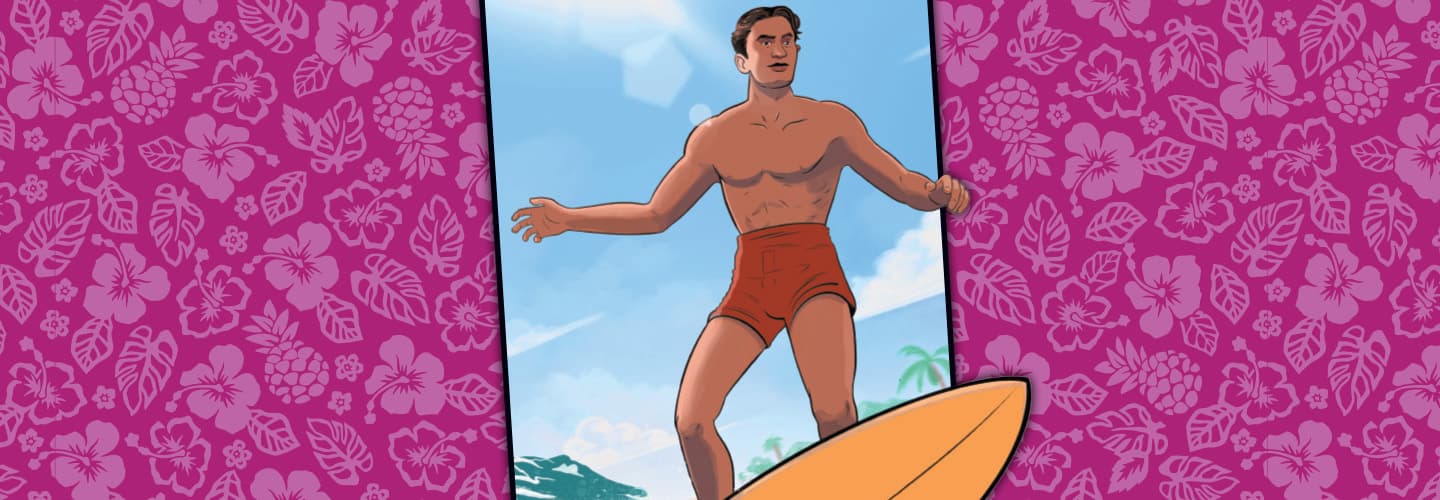A crowd gathered on a beach near Sydney, Australia. It was December 1914. Duke Kahanamoku (kah-hah-nah-MOH-koo) dropped his surfboard into the ocean and paddled toward the waves. When he zoomed back into view, he was standing tall on top of the water.
Kahanamoku wasn’t done. He rode wave after wave, facing forward and backward on his board—he even stood on his head! Nobody in Australia had ever seen anything like it. His exhibition helped turn surfing into a national craze.
Kahanamoku introduced the sport to other parts of the world. Today, he is known as the father of modern surfing—and one of the greatest ever.
A crowd gathered on a beach near Sydney, Australia. It was December 1914. Duke Kahanamoku (kah-hah-nah-MOH-koo) dropped his surfboard into the ocean. He then paddled toward the waves. When he zoomed back into view, he was standing tall on top of the water.
Kahanamoku wasn’t done. He rode wave after wave, facing forward and backward on his board. He even stood on his head! Nobody in Australia had ever seen anything like it. His exhibition helped turn surfing into a national craze.
Kahanamoku introduced the sport to other parts of the world. Today he is known as the father of modern surfing—and one of the greatest surfers ever.

